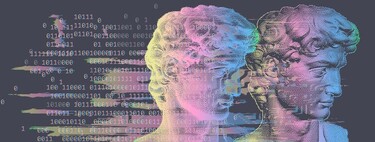Art with mechanical mirrors that interact with the viewer: this creator’s surprising proposal turns engineering into a fantasy

Art and engineering do not go bad at all. Especially when they come together to surprise the public. For a good handful of years Daniel Rozin is dedicated to demonstrating it through interactive sculptures with which he explores the possibilities of digital creation. Some of his best-known work is actually based on the use of “mechanical mirrors”, terrain in which he entered in 1999 with Wooden Mirror, an octagonal grid of wooden squares connected to 830 motors that, thanks to a camera and computer, modify its mosaic when the viewer passes by.
Until today has not stopped experimenting in that line with forms, materials and possibilities.
Some of his designs are somewhat reminiscent of the James Webb’s primary mirror, a piece of 18 hexagonal segments designed to the millimeter and precisely assembled by NASA engineers to probe the universe, but probably would not clash in the halls of the Tate Modern or the Guggenheim. Another example of how close art and mechanics are often.
Mission: surprise (and interact) with the public
In time Rozin has gone exploring with different materials to create “pixels”. In Fan Mirror (2013), for example, assembled a large structure of more than four meters using 153 fans from Korea, China, Taiwan, Japan and Spain controlled by motors and linked in turn to a computer and camera. The objective: that, like Wooden, reacted to the movement.
In the case of Angles Mirror He used a steel triangle with almost a half thousand (465) small plastic strips. When assembling it, he used an Xbox Kinect, a Mac Mini, and custom software. When it comes to pulling materials, Rozin does not set limits. In 2011, for example, he appealed 500 irregular pieces that he assembled in a composition called Trash Mirror.

To get your mechanical mirrors to interact with the public – some of your pieces “reflect” the shapes and play with light and shadows To create pixels — the artist has used video cameras, motion sensors, and lasers. “In many cases, the viewer becomes the content of the piece and in others they are invited to take an active role in the creation. Although computers are often used in Rozin’s work, they are rarely visible.”, details the creator’s website, a native of Jerusalem, but with a study in the US, where he teaches art classes.
Several years ago, for example, he presented a huge circular sculpture, about eight feet in diameter, commissioned by Nespresso for its exclusive Manhattan boutique store. The piece, Last Chance to Shine, is composed of 832 tiles made from recycled aluminum coffee capsule caps. Each one is in turn connected to a motor that responds to 52 controllers and an algorithm. Four passive infrared sensors allow Rozin’s sculpture to detect the thermal energy of people passing by.

“The four sensors give me a one or a zero, it just says: ‘There is a person in front of him or someone is moving or not'”, explained the creator in 2018 to The Verge: “I use mechanics or kinetics to create my art and over the years i have fallen in love with this”.
The truth is that more than two decades after Wooden Mirror, Rozin continues to experiment with engineering at her sites. At the Untitled Art Miame Beach 2021 presented CMY Shadows Mirror, a curious circular piece equipped with custom software, 3D camera and motors. The work, 182.9 centimeters in diameter, is composed of 1,555 colored acrylic palettes that move in sync, reflect the movements of the audience and show random animations.
In August 2021 his art went a step further and even incurred in the field of music. Percussionist Steven Schick took advantage of the clicking that the tiles of one of his sculptures make to give a concert at the La Jolla Music Society’s SummserFest.
One more sample of what engineering and art can go hand in hand.
Cover image | Tomislav Medak (Flickr)
Reference-www.xataka.com